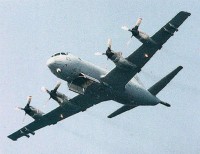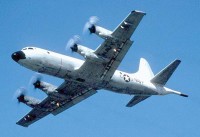|
Global Aircraft -- P-3 Orion
Aviation Center
US Attack
US Bombers
US Cargo
US Fighters
US Helicopters
US Patrol/Pursuit
US Reconnaissance
US Tankers
US Trainers
US UAV's
US X Planes
Orbiter Vehicles
WWI Aircraft
WWII Aircraft
Airbus
Antonov
Boeing
Dassault
Ilyushin
Kamov
MiG
Mil
Saab
Sukhoi
Tupolev
Yakovlev
Joint/Rest of World
Entertainment Center
Members Center
New Technologies
Contact Us
Extra Navigation
GAC Engine
P-3 Orion Specifications
P-3 Orion Features
The P-3C is a land-based, long-range, anti-submarine warfare (ASW) patrol aircraft. It has advanced submarine detection sensors such as directional frequency and ranging (DIFAR) sonobuoys and magnetic anomaly detection (MAD) equipment. The avionics system is integrated by a general purpose digital computer that supports all of the tactical displays, monitors and automatically launches ordnance and provides flight information to the pilots. In addition, the system coordinates navigation information and accepts sensor data inputs for tactical display and storage. The P-3C can carry a mixed payload of weapons internally and on wing pylons. Source: http://www.chinfo.navy.mil
P-3 Orion Background
In February 1959, the Navy awarded Lockheed a contract to develop a replacement for the aging P2V Neptune. The P3V Orion, derived from Lockheed's successful L188 Electra airliner, entered the inventory in July 1962, and more than 30 years later it remains the Navy's sole land-based antisubmarine warfare aircraft. It has gone through one designation change (P3V to P-3) and three major models: P-3A, P-3B, and P-3C, the latter being the only one now in active service. The last Navy P-3 came off the production line at the Lockheed plant in April 1990. Source: http://www.chinfo.navy.mil
| ||||||||||||||||||||||||||||||||||||||




